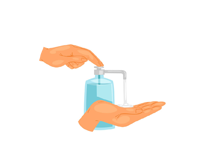Bupivacaine
Introduction
Bupivacaine is a local anesthetic used to numb a specific area of the body, preventing pain during surgical procedures or certain medical treatments. It is commonly administered through injection or nerve block and is often used in surgeries, labor and delivery, or other invasive procedures where pain relief is needed. Bupivacaine works by blocking nerve signals in the targeted area, providing effective and temporary pain relief. It is considered one of the most potent and long-lasting local anesthetics available today.
Medicine Not Available for Bupivacaine
Uses of Bupivacaine
- Used for local anesthesia during surgeries or medical procedures.
- Administered for pain relief during labor and delivery.
- Used in nerve blocks for chronic pain management.
- Effective in dental procedures and minor surgeries.
- Commonly used for regional anesthesia, such as epidural anesthesia.
How Bupivacaine Works
Bupivacaine works by inhibiting the transmission of nerve signals, blocking the sodium channels in the nerves responsible for transmitting pain. By preventing these signals, it provides local numbness in the targeted area, allowing procedures to be performed without discomfort. Its long-lasting effect makes it suitable for surgeries requiring extended anesthesia.
Benefits of Bupivacaine
- Provides long-lasting pain relief, often for several hours.
- Effective for both minor and major surgical procedures.
- Reduces the need for general anesthesia, lowering risks.
- Helps manage acute and chronic pain through nerve blocks.
- Offers pain relief during labor and delivery, enhancing patient comfort.
How to Take Bupivacaine
Bupivacaine is typically administered by a healthcare professional through an injection or nerve block. The dosage and administration method depend on the specific procedure and the area being treated. It is important to follow the healthcare provider` s instructions carefully to ensure safety and effectiveness. The dosage may vary depending on the type of surgery, the patient`s age, and other medical factors.
Type of Dosage Available
- Bupivacaine injection (various concentrations, typically 0.25%, 0.5%, or 0.75%).
- Bupivacaine in combination with other local anesthetics (in some formulations).
- Epidural or spinal injections for regional anesthesia.
Side Effects of Bupivacaine
- Common side effects include dizziness, lightheadedness, and numbness in unintended areas.
- In rare cases, it may cause allergic reactions such as rash, itching, or swelling.
- Excessive doses or improper administration may cause heart irregularities, seizures, or breathing difficulties.
- May lead to nerve damage if administered incorrectly or in high doses.
- Local side effects can include swelling or redness at the injection site.
Safety Advice
- Always ensure Bupivacaine is administered by a trained healthcare provider.
- Inform your doctor if you have heart conditions, liver issues, or allergies to anesthetics before receiving Bupivacaine.
- Monitor for side effects, particularly if you experience unusual heart rate or breathing problems.
- Follow your healthcare provider`s instructions regarding dosage and administration to prevent overdose or complications.
- Do not attempt self-administration without proper medical supervision.
Frequently Asked Questions (FAQs)
Q: How long does Bupivacaine last?
A: Bupivacaine can provide pain relief for several hours, with the effects generally lasting between 4-8 hours depending on the concentration used and the area treated.
Q: Can Bupivacaine be used for all types of surgeries?
A: Bupivacaine is commonly used for local anesthesia in various types of surgeries, especially those requiring regional or nerve block anesthesia. However, your healthcare provider will determine if it` s appropriate for your specific procedure.
Q: Are there any alternatives to Bupivacaine?
A: Yes, alternatives include other local anesthetics such as lidocaine, ropivacaine, and prilocaine, depending on the procedure and patient needs.
Disclaimer : Zeelab Pharmacy provides health information for knowledge only. Do not self-medicate. Always consult a qualified doctor before starting, stopping, or changing any medicine or treatment.
Download India's most affordable pharmacy app
- Compare with medicine prices
- Save upto 90% on your medicine bills

Temperature Controlled storage and delivery

Regular Sanitization

Disinfected Packaging













 Added!
Added!